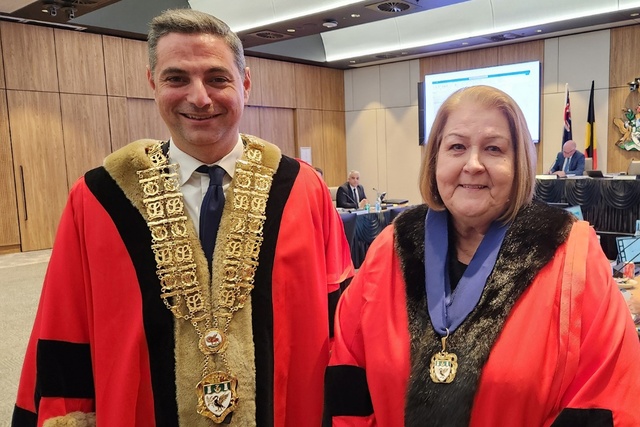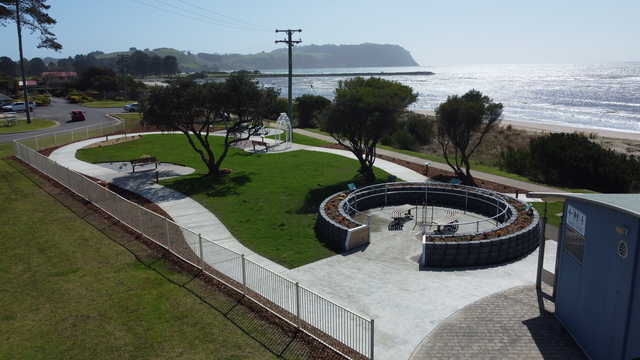In February 2008, Ku-ring-gai Council in Sydney’s north went live with a new telecommunications system servicing all its main offices and remote sites. In the following interview Council’s IT Manager, John Giovinazzo, explains
how this was achieved.
What are the key features of the new system?
- As well as basic phone
call functionality the system
provides voicemail,
automatic call distribution
(ACD) queues, a corporate
directory, call recording,
fax gateway, soft phones (a
software application installed
on a computer or laptop that
mimics a telephone)
and Nortel’s MCS Unified
Communication features. - The system is fully managed
and hosted in an Optus data
centre. - It is designed to provide fault
tolerance and redundancy
if one or more sites fail. The
previous PABX was in the
main Council building and
any outage would affect all
sites. - It is based on industry
standards (SIP), allowing
us to use a wide variety of
equipment if we chose to. - Administration is all
carried out remotely via a
web browser, this allows
internal IT staff to complete
routine tasks like moves,
adds and changes from
anywhere on our network
and without the intervention
of external service providers.
Why was a new/updated system required?
The previous system was fast approaching 20 years of age and supporting it was becoming harder each year. This presented a number of issues including increased maintenance costs, difficulty sourcing replacement parts and the ability to find people with the skills and knowledge required to maintain it.
The previous system also lacked basic features and functionality which are now considered mainstream. This included voicemail, call centre functionality and fax gateways.
What process did Council use to decide this was the best system to meet your telecommunications needs?
Right from the very beginning we realised that we did not have the required skills or knowledge to successfully complete this project. Council engaged the services of PABX Advisory Services (PAS), a vendor independent, telecommunications consulting company to assist with the replacement project. PAS had assisted numerous organisations, including a number of other councils, with similar projects.
PAS started the process by reviewing and documenting our current system to identify the features and functionality we currently had, and, more importantly, didn’t have. They then held briefing sessions with all Council staff and subsequently invited feedback to determine the requirements for all the areas within the organisation. This then led to the development of a requirements and technical specifications document.
Once we had the requirements documented we decided that a VOIP system based on SIP standards would suit our requirements. This would allow us to design a system that would provide fault tolerance, redundancy as well as allowing us to easily connect all 11 Council sites. Aside from this we wanted to go to market with an open mind and didn’t have any preference for either a specific vendor or the type of system, being software or hardware based.
We received several tender responses including both hardware and software based solutions. Together with PAS we conducted a rigorous evaluation process that, amongst other things, included detailed demonstrations for several of the core features. An important part of the evaluation process was the involvement of staff from key areas like our Call Centre who would be using the more critical features of the new system.
Eventually the tender was awarded to Optus (Alphawest) for their Nortel based solution.
When was it installed and was the changeover seamless?
The new system was delivered, installed and configured over several months in 2007 and early 2008. The new system went live on 4 February 2008. The actual changeover from the old system to the new occurred over the preceeding weekend and went very smoothly. Due to the configuration of the previous system we had to cutover our entire organisation including all 11 sites at once. We shut down the old system on the Friday night and everything that was scheduled to cutover was up and running for business as usual on the Monday morning.
What benefits has the system delivered for staff and your external customers?
The new system has been well received and has provided a number of benefits such as:
- consistent look and
feel throughout our entire
organisation, staff in all sites
have access to the same
phone handsets and features - our entire phone system is
now on the same in-dial
number range. This has
allowed us to realise
considerable savings in
relation to line rental and call
charges, especially at our
eight remote sites - we have been able to extend
ACD features beyond our
Call Centre and provide
queues for areas such as IT
and our main Library. - most of the basic management
tasks including moves, adds
and changes can now be
carried out by internal IT
staff, this allows us to deal
with staff requests a lot
quicker and reduce
maintenance costs - the increased capacity of
the new system also means
our external customers have
a better chance of contacting
us - new reporting functionality
allows us to monitor
the system and report to
management on the
performance of our
organisation, especially in
relation to the Call Centre.
Have you encountered any problems?
Overall there were no major issues. However we did experience some minor problems, mainly around the use of analogue devices, the issue being that somehow we fell short on the required number of analogue ports and had to add these soon after implementation. The analogue ports are mainly used for fax machines and in some cases for cordless phones.
Aside from this there were the usual teething problems associated with any system implementation of this type, however, everything settled down after the first few weeks.








